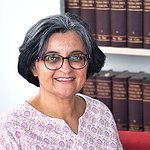Mapping the Global Middle Ages Through Computer Simulation

The discipline of medieval French literature has been slower than others (compared to other European languages or to fields other than literature) in adopting a global approach and strategies to reading the medieval past. Until today, many medieval French literary scholars, even those who are sensitive to notions of cultural and religious diversity and hybridity, remain skeptical of the idea that the Islamicate world played a foundational role in the French literary and cultural traditions. And yet, medieval French literature offers a rich reservoir of themes and material depicting the encounter between Islam, Judaism, and Christianity which are essential for understanding perceptions of the religious other at all levels of society.
The resistance to accepting the central role of the interreligious and the multicultural in the literary text is mostly due to the fact that even though one can point to vectors of movement including pilgrimage, crusade, merchant caravans, and itinerant performers, it remains impossible to identify and map specific moments and locations when stories were told, ideas exchanged, and cultural traditions adopted or adapted. This lack of data has historically been the cause of heated debates about questions of cross-cultural transmission, indebtedness and the entanglement of religions and traditions.
Developments in digital humanities and computer technology offer us, today, productive new methodologies that could address these complicated questions related to the movement of tales and ideas. They are an ideal way to test and visualize theories of cultural transmission, religious entanglement, and textual transformation.
he project at the KHK (May to July 2019) will investigate how computer 3D simulations and digital storytelling programs can model the ways that texts and ideas (not just peoples and goods) moved across vast geographical spaces, navigated political systems and religious structures, while adapting and translating linguistic and cultural registers. Using one tale from The One Thousand and One Nights (the Story of Kamar al-Zaman and the Princess Boudour) as a case study, I will map the ways this text moved from the Muslim East to Christian Europe in the 12th century, and more specifically how elements of this tale could have crossed the Mediterranean via the Lusignan court at the Crusader kingdom of Cyprus circa 1194. The choice of Cyprus is not random. With its strategic location in the Mediterranean at the confluence of the land and sea routes of the Silk Road, Cyprus served as a crossroads between East and West in the Middle Ages. The area was home to Arabs, Muslims, Jews, and Eastern and Western Christians. Crusaders, pilgrims, soldiers, and merchants from the Far East, Europe, Muslim states, and Byzantium mingled on the island before heading in disparate directions, leaving behind a legacy that augmented an already rich cultural layering of Phoenician, ancient Greek, and later Roman civilizations. Cyprus is therefore an especially apt geographic location in which to establish moments of cross-cultural contact and to test shared cultures and rituals.
The project’s goal is to create a videogame (using the Unity3D game engine) and a digital storytelling game (using "twine") that will invite scholars, students, and videogame players more generally to experience the multicultural, multi-religious, and mutli-lingual Lusignan court of the 12th century. The audience will be able to travel virtually around the globe along with medieval voyagers, to experience first hand cross-cultural encounters in the marketplace, in the court, or along trade routes, and to participate directly in the process of cultural transformation, religious co-existence, and textual negotiation and reconstruction.
Beteiligte Personen


